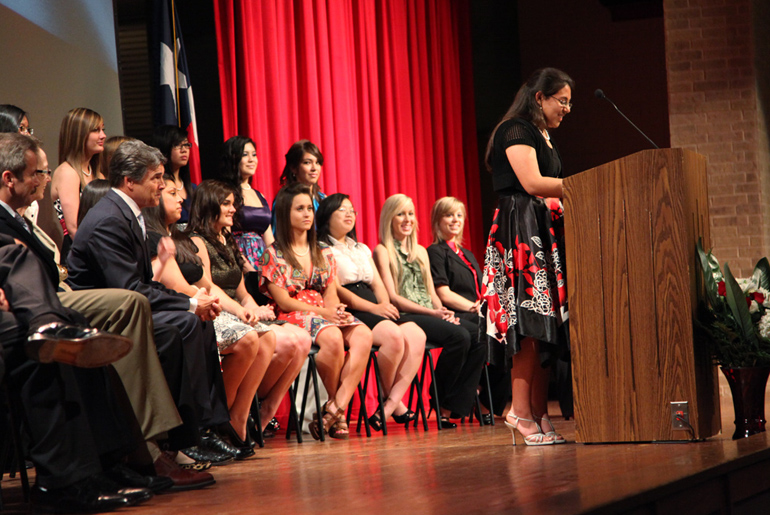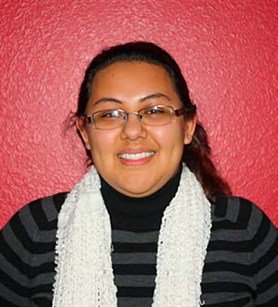
Long before she was preparing to defend her thesis on surface plasma nitriding of fuel cladding materials, Elizabeth Castanon joined a new organization her senior year at Palacios High School called Powerful Opportunities for Women Eager and Ready for Science, Engineering and Technology (POWER SET).
“The POWER SET group came at a time when I really didn’t know what I wanted to do,” Castanon said. “I don’t know where I would be without them showing us what engineering was all about.”
POWER SET was founded by the Texas A&M Engineering Experiment Station’s (TEES) Nuclear Power Institute and the South Texas Project Electric Generating Station to encourage high school girls to pursue futures in STEM related fields.
Castanon credits the group, which takes students on facility tours, brings in guest speakers and shows opportunities available in STEM fields, with helping her find her focus as she neared the end of high school. “It’s definitely had an impact on getting girls interested in engineering,” she said.
After deciding she wanted to be an engineer, she considered going to Texas A&M University, but received a scholarship from Texas A&M University-Kingsville. There she received simultaneous dual bachelor’s degrees in mechanical engineering and physics before moving on to graduate studies in nuclear engineering at Texas A&M, where she received a fellowship to work in nuclear engineering associate professor Dr. Lin Shao’s lab.
Castanon had an interesting route to her fellowship work. At A&M-Kingsville she assisted physics professor Dr. Wayne Kinnison in piecing together a particle accelerator. She said the accelerator hadn’t been used in more than 30 years, and they restored it to working order. Kinnison moved to Texas A&M as a research scientist at NPI and told Shao about some of the work that Castanon had done with him in Kingsville. As a result, Shao nominated her for the fellowship.

Shao’s group studies materials as they relate to nuclear engineering, and Castanon’s thesis studies the effects of nitriding materials as opposed to plating or vapor deposition.
“Nitriding is just implanting nitrogen into the surface of whatever metal you have,” she said. “If that metal makes a nitride then you can form this compound that enhances a lot of the surface properties. But since it’s only on the surface it doesn’t change the core properties of the material. And since it forms inside whatever material you have, it’s near the surface but it’s inside, so it probably won’t just come off. That’s what we’re looking at inside the lab.”
She’s already accepted a position at the South Texas Project after graduation. Looking back, Castanon said that as hard as it is to believe, she’s mostly stuck to a 10-year plan she had coming out of high school.
“I actually did have a 10-year plan to go to school, get my master’s and go work at STP,” she said. “That’s what I said I was going to do at the beginning. There’s been times I thought about doing something else, but that’s the way it’s worked out.”
When she told her parents that she had gotten a job at the nuclear plant, she said they could not have been more excited.
“My family was very supportive from the moment I said I wanted to be an engineer,” she said. “They were also very excited when I said I was going to work at the South Texas Project. My dad said it was a dream come true.”
Castanon has 12 brothers and sisters, and said that she hopes she is a good example for them, but also for other students from her area.
She also takes particular pride in being from the Palacios area. Her family lives inside a 10-mile radius of the South Texas Project nuclear facility, and she said she gets to be an example of the positives of nuclear power and research. Still, she does like to have a little fun when people ask her about it.
“I always joke with people that I grew up near there and I don’t have three arms or three eyes and it’s okay,” she laughed. “But most people I deal with are younger and have an open mind about nuclear power.”
